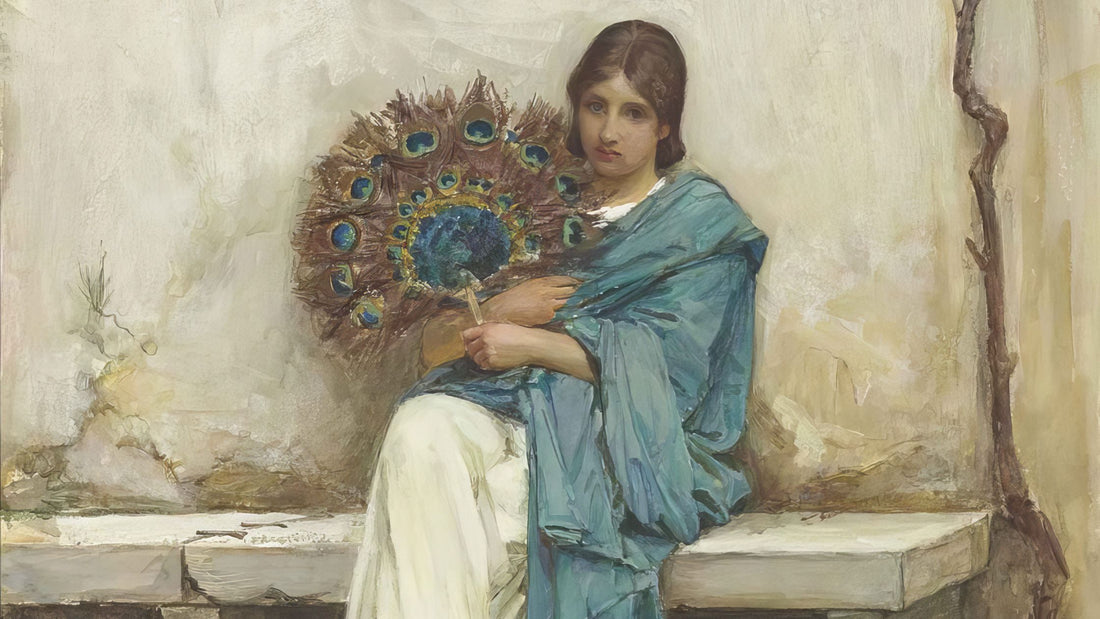
The Pre-Raphaelite Brotherhood
Share
A Deep Dive into the Victorian Era's Artistic Revolutionaries
In 1848, London witnessed the birth of the Pre-Raphaelites Brotherhood, a clandestine group of youthful artists and a writer who rejected the Royal Academy's focus on idealized art, as embodied by Raphael's work.
You've probably already seen images of young women, often surrounded by flowers depicted in warm colors. Indeed, Women were the main source of inspiration for this artistic movement, even if religious subjects were important in the early days. Millais' painting Christ in the House of His Parents is one of the biggest artistic scandals of the 19th century.

The realistic treatment of Christendom's first family was not to everyone's taste. To understand the virulence of the critics of the time, we need only refer to Charles Dickens' words on Jesus' appearance: "a hideous, wry-necked, blubbering, red-haired boy in a nightshirt".
We should also mention the introduction of literary subjects that had received little or no previous treatment, such as the famous scene from Hamlet in which Ophelia loses her mind when her father is murdered by her lover.

Sir John Everett Millais, Ophelia (1851–2)Tate
Reimagine the Victorian art scene.
Gone are the overly romanticized landscapes and theatrical historical re-enactments. Enter the Pre-Raphaelite Brotherhood (PRB), a band of young rebels who shook the art world with their radical techniques, medieval inspirations, and unflinching social commentary.

Lady Godiva, John Collier (1897)
Inspired by the Past, Focused on the Present
Formed in 1848 by a fiery trio – Dante Gabriel Rossetti, William Holman Hunt, and John Everett Millais – the PRB challenged the dominance of the Royal Academy. They saw the Academy's art as stale and artificial, prioritizing idealized beauty over raw emotion and meticulous detail. They disdained the shallowness of the popular genre paintings then in vogue.
The name "Pre-Raphaelite" wasn't a random pick. It signified their admiration for the artistic purity of the Italian painters before Raphael, known for their intense focus on detail and vibrant colors. The members of this movement, incorporated into the Romantic movement, had favorite themes drawn from antiquity, the medieval world and literature.
Mythological themes :
Mythological and antique references, expressed in the choice of subject or the presence of antique decorations

Hylas and the Nymphs, John William Waterhouse
By John William Wterhouse :
- Hylas and the Nymphs (1896)
- Undine (1872)
- Ulysses and the Sirens 1891
- Pandora (1896)
- Danaïdes (1903, 1906)
- Gone but not forgotten (1873)
Litterature :

Hamlet (Shakespeare) : Ophelia by JW Waterhouse
The tempest (Shakespeare) : Miranda by JW Waterhouse, Ferdinand lured by ariel by Millais
Herode et Mariamne (Voltaire) : Mariamne Leaving the Judgement Seat of Herod by JW Waterhouse
The Decameron (Boccace) : Isabella by John Everett Millais, Isabella and the Pot of Basil by William Holman Hunt

Ferdinand lured by Ariel, John Everett Millais

Miranda, John William Waterhouse
Medieval Mystique :
Inspired by Arthurian legends and religious themes, their works often depicted characters and settings from a bygone era, but with a fresh, emotional intensity.
- La Belle Dame Sans Merci, Francis Dicksee
- La Belle Dame Sans Merci, JW Waterhouse 1893
- The Chapel before the Lists, Dante Gabriel Rossetti
- 'The Knight Errant', Sir John Everett Millais, Bt, 1870
 La Belle Dame Sans Merci, Francis Dicksee, c. Bristol Art Museum and Gallery
La Belle Dame Sans Merci, Francis Dicksee, c. Bristol Art Museum and Gallery
Beyond the Canvas: A Multifaceted Movement
The PRB wasn't just about painting. It was a movement that encompassed:
Poetry:
Rossetti, a gifted poet himself, and his associates like Christina Rossetti, explored similar themes of love, loss, and the medieval world in their verses.
Decorative Arts:
The PRB's influence extended to design, with William Morris emerging as a leader in the Arts and Crafts movement, advocating for a return to handcrafted objects.
A Legacy that Endures :
Despite facing harsh criticism at first, the Pre-Raphaelites eventually rose to prominence. A second wave of the movement emerged around 1860, heavily influenced by the art of Dante Gabriel Rossetti. This later phase played a significant role in the development of Symbolism.
Though the PRB disbanded in the mid-1850s, its influence on British art and beyond is undeniable. Their focus on detail, exploration of emotions, and willingness to challenge artistic norms paved the way for future movements like Symbolism and Art Nouveau.
Dive Deeper :
Explore virtual galleries of PRB masterpieces at the Tate Britain
William Holman Hunt and his Pre-Raphaelite ‘son in art’ Edward Robert Hughes
